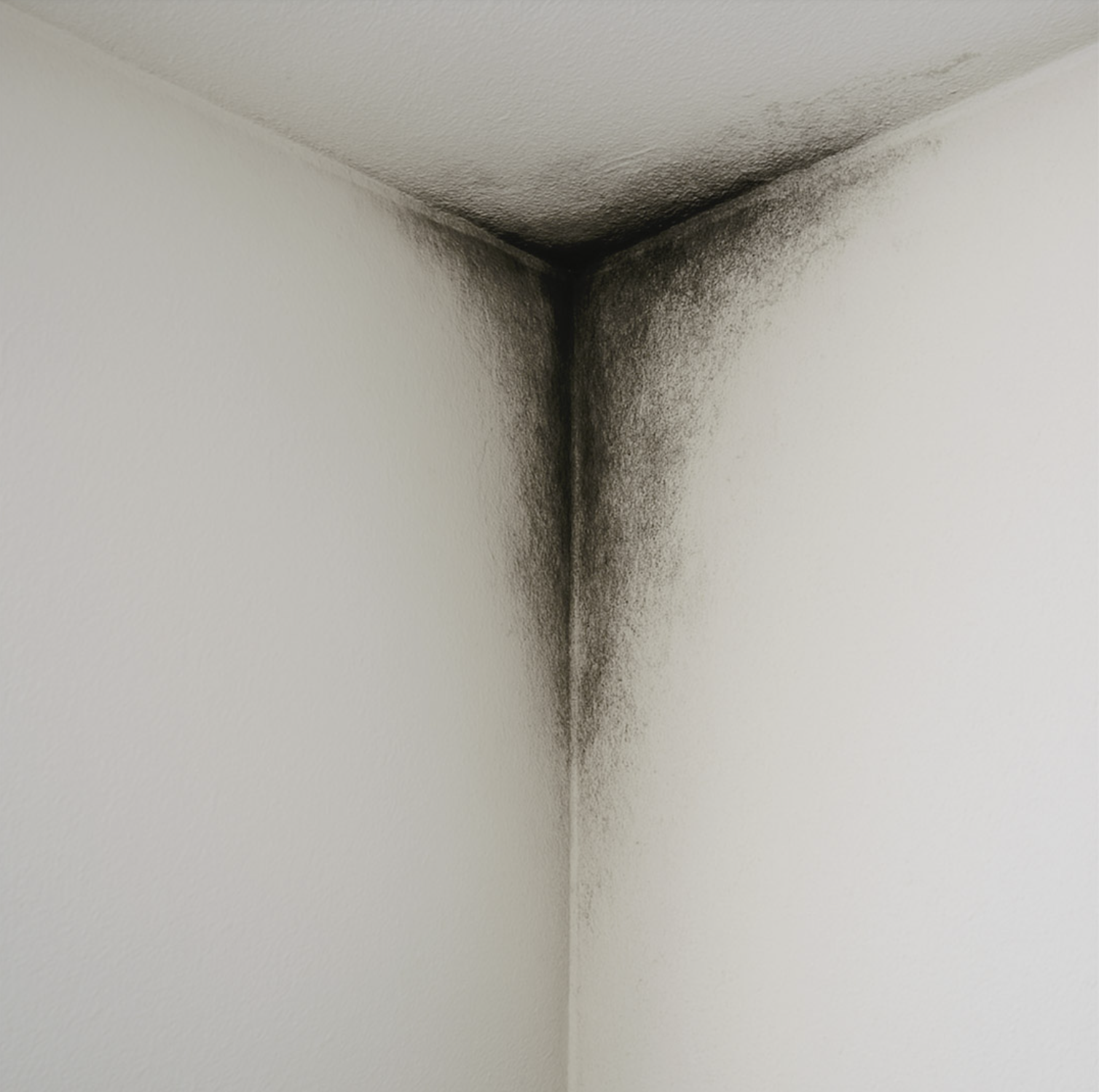Have you spotted a small black spot in a corner of the wall? At first, you think it’s probably a bit of dust or a forgotten mark… and then the days go by, and this area widens, darkens, and sometimes, a musty smell begins to be noticed. Nothing trivial about that. These marks are often a sign that something is going on behind the walls. But don’t panic: with a few good reflexes, you can take action, limit the damage, and restore a healthy interior.
Why do these black spots appear? (It’s not just a cleaning issue)
A wall that turns black, especially in a corner, is rarely just a matter of cleanliness. More often, it’s excess humidity that’s the cause.
In poorly ventilated rooms—a bathroom where steam gets trapped, a kitchen that heats up without openings, or even a bedroom that’s rarely aired—humid air can’t escape. It ends up condensing on the cold walls… and that’s where mold finds its favorite playground.
It can also be due to leaks from outside. An overflowing gutter, a damaged roof, a porous wall, or even water rising from the foundations… all of these can cause these famous stains.
And sometimes, it’s the insulation that works against you. A “thermal bridge”—a place where the temperature varies greatly between indoors and outdoors—can create a cold spot where moisture can easily accumulate.
A small detail that we don’t always think about: furniture placed too close to the wall. Without space for air to circulate, humidity stagnates and mold discreetly settles behind the sofa or dresser.
According to the ANAH (National Agency for Housing and Urban Planning), one in five homes in France shows signs of persistent damp. Suffice it to say, you’re far from alone in this situation.
A golden tip: don’t underestimate these hidden corners. They’re often the first to « speak » when something isn’t right.
How can I react immediately to prevent it from getting worse?
As soon as you notice a dark spot, there’s no point waiting for it to spread. The faster you act, the more you limit the damage.
Start by airing the room thoroughly, morning and evening, even if it’s cold. Ten minutes is enough to renew the air and remove moisture. And if you’re in a room that’s often humid (bathroom, laundry room, etc.), this is even more important.
